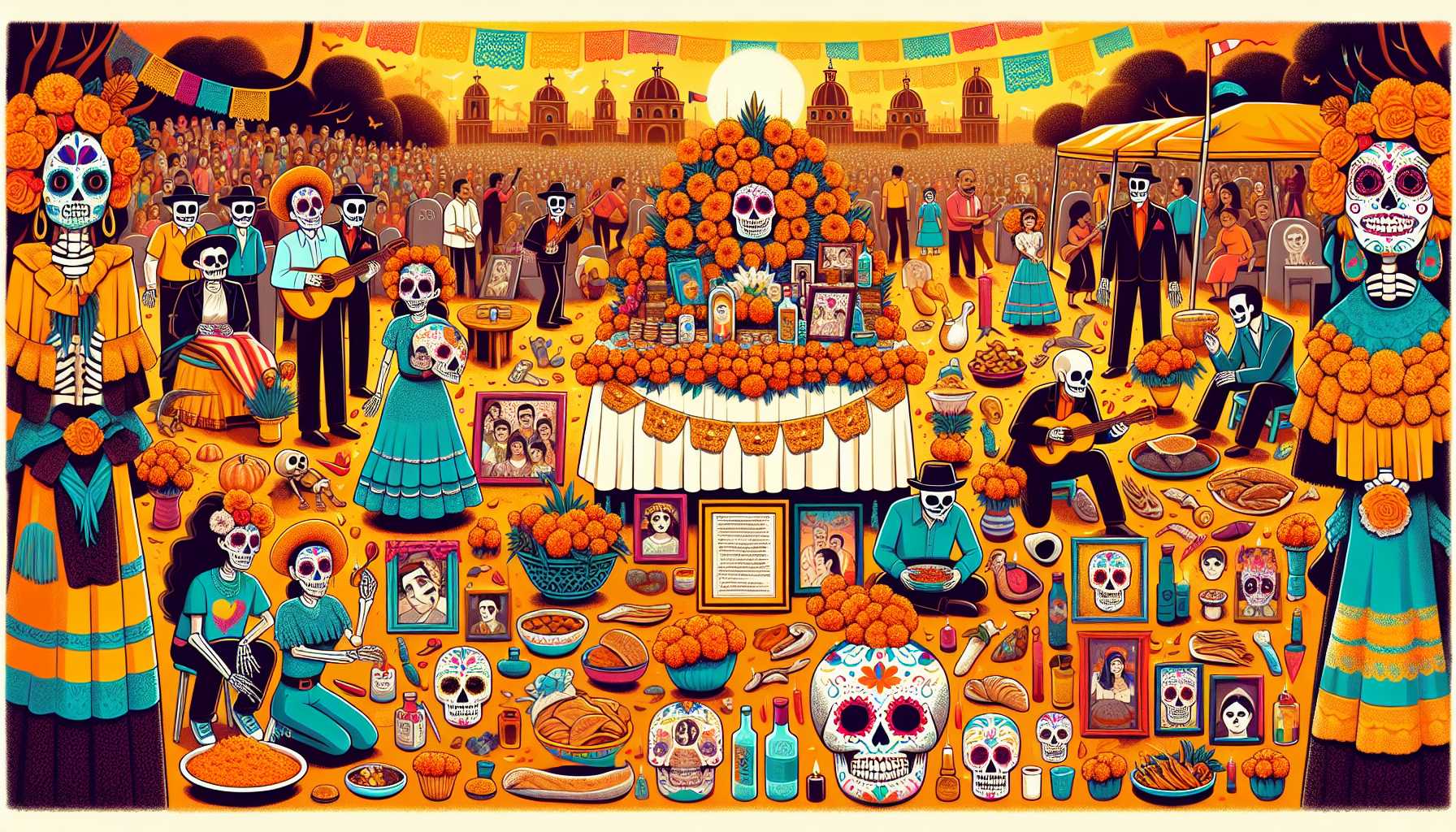
The Vibrant Traditions of Dia de los Muertos Celebrations
The Day of the Dead (Día de los Muertos) is a vibrant Mexican tradition celebrated primarily on November 1st and 2nd, honoring deceased loved ones.
jug-eun ja-ui nal (Día de los Muertos) eun jumro 11wol 1il-gwa 2il-e ginyumdoen saengsaenghan meksiko jeontong-eulo, go-in-i doen salanghaneun salamdeul-eul gihabnida.
죽은 자의 날(Día de los Muertos)은 주로 11월 1일과 2일에 기념되는 생생한 멕시코 전통으로, 고인이 된 사랑하는 사람들을 기립니다.
This colorful festival combines indigenous beliefs with Catholic influences, creating a rich tapestry of rituals and customs.
i dachaelo-un chugje-neun wonju-yul-ui mid-eul gatholig-ui yeonghyang-eul gyeolhabhayeo uisig-gwa gwansub-ui pungbuhan taepiseuteuli mandeubnida.
이 다채로운 축제는 원주율의 믿음을 가톨릭의 영향을 결합하여 의식과 관습의 풍부한 태피스트리를 만듭니다.
Families create altars (ofrendas) adorned with photos, favorite foods, and mementos of the departed to invite their spirits back for a day of reunion.
gajogdeul-eun go-in-ui yeonghon-eul bureugi wihae sajin, joh-ahaneun eumsig mich gieogpum-eulo jangsig-doen jedan (ofrendas)-eul mandeubnida.
가족들은 고인의 영혼을 부르기 위해 사진, 좋아하는 음식 및 기억품으로 장식된 제단(ofrendas)을 만듭니다.
During the festivities, communities gather to honor and remember those who have passed, often visiting cemeteries to clean graves and decorate them with flowers, especially marigolds, which symbolize death and the celebration of life.
chugje dong-an, keomyuniti-neun go-in-eul gigi-ro gieoghagi wihae moyeo, jongjong myoji-reul bangmunhayeo mudeom-eul cheongsohago kkot, teugbyeolhi jug-eum-eul sangjinghago salm-eul chughahaneun geumjanhwa-ro jangsig-hamnida.
축제 동안, 커뮤니티는 고인을 기리고 기억하기 위해 모여, 종종 묘지를 방문하여 무덤을 청소하고 꽃, 특히 죽음을 상징하고 삶을 축하하는 금잔화로 장식합니다.
The holiday features lively parades, music, dance, and the iconic sugar skulls, all of which contribute to the joyful remembrance of the deceased.
i chugje-neun hwalgichan peoreideu, eum-ag, chum, geuligo sangjingjeog-in seoltang haegol-eul teugjing-eulo hamyeo, modu go-in-eul gilig-i wihan gippeum-ui gieog-e giyeohamnida.
이 축제는 활기찬 퍼레이드, 음악, 춤, 그리고 상징적인 설탕 해골을 특징으로 하며, 모두 고인을 기리기 위한 기쁨의 기억에 기여합니다.
Overall, Día de los Muertos is a time for celebration rather than sorrow, emphasizing the continuity of love and connection between the living and the dead.
jeonbanjeogeulo, Día de los Muertos-neun seulpeum-boda ginyem-ui sigan-imyeo, salain-un salam-gwa jug-eun ja sai-ui salang-gwa yeongyeol-ui yeonsokseong-eul gangjohamnida.
전반적으로, Día de los Muertos는 슬픔보다 기념의 시간이며, 살아있는 사람과 죽은 자 사이의 사랑과 연결의 연속성을 강조합니다.
It showcases Mexico's unique cultural heritage and serves as a reminder of the importance of family, memory, and the cycle of life and death.
i chugje-neun meksiko-ui dokteughan munhwa yusan-eul seonboimyeo, gajog, gieog mich salm-gwa jug-eum-ui sunhwan-ui jungyoseong-eul ilkkaewojumnida.
이 축제는 멕시코의 독특한 문화 유산을 선보이며, 가족, 기억 및 삶과 죽음의 순환의 중요성을 일깨워 줍니다.
Based on this article
